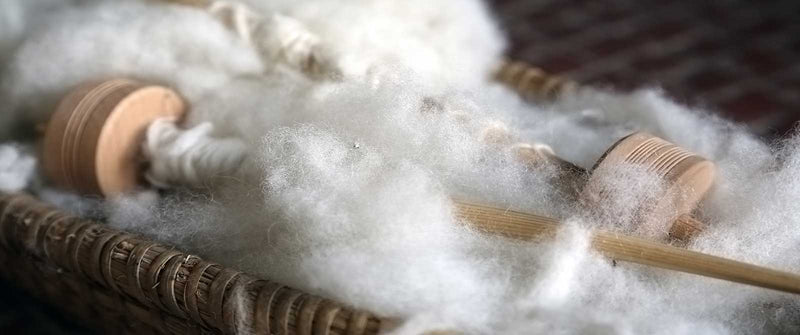What Is Cashmere and Why It’s Considered One of the Softest Fabrics in the World
What Is Cashmere and Why It’s Considered One of the Softest Fabrics in the World
Blog Article
Exploring the Different Kinds of Cashmere an All-natural Fiber for Ultimate Luxury
Cashmere, an all-natural fiber, is typically associated with luxury and comfort. The extra budget-friendly Chinese cashmere, the typical Scottish version, and the high-end Italian mix, all tell a different story of this remarkable fiber.
Comprehending the Luxurious Nature of Cashmere
Cashmere, typically linked with deluxe and convenience, holds a distinct appeal on the planet of all-natural fibers. This soft, light-weight product is fancied for its outstanding heat and amazing durability. Unlike various other all-natural fibers, cashmere combines insulation with breathability, using unrivaled comfort across varying temperatures. Its shiny finish and soft appearance contribute to its high-end charm, justifying the premium rate that typically features cashmere garments. In addition, cashmere's inherent crease resistance and elasticity enhance its charm, making it a preferred choice for costs apparel and devices. In spite of its fragile appearance, cashmere possesses a surprising resilience, able to preserve its form and luxurious feeling gradually. This one-of-a-kind blend of attributes cements cashmere's setting as a symbol of style and extravagance.
Just What Is Cashmere and Where Does It Come From?

Offered these extraordinary high qualities, one might question the origin and make-up of this glamorous fiber. Cashmere is derived from the soft undercoat of cashmere goats, largely discovered in Mongolia, China, Iran, and Afghanistan - is cashmere a natural fiber. These goats are adjusted to extreme climatic conditions, creating an incredibly great, soft underfur as a defense versus the bitter cold. This underfur, or undercoat, is what is harvested for cashmere. Each springtime, when the goats naturally shed their wintertime coat, farmers comb the fine underhair, leaving the coarser hair behind. This precise process adds to the scarcity and high cost of cashmere. With its beginning in the extreme landscapes of Asia, cashmere is a testament to nature's capability to create high-end from adversity.
Decoding the Various Kinds of Cashmere
Recognizing the various kinds of cashmere is vital to appreciating the quality and distinct qualities of this luxurious textile. Usually, cashmere is categorized into three types: raw, virgin, and recycled. Raw cashmere is directly gotten from the goat and is unrefined. This kind often contains contaminations such as dust and crude hair. Virgin cashmere, on the various other hand, is the pure, unrecycled product that is spun right into thread for the very first weblink time. It is the softest and most glamorous. Ultimately, recycled cashmere is made from virgin product that has actually been formerly used. It is re-spun and used in producing lower-cost cashmere products. Deciphering these types is the initial step in comprehending the exclusivity and worth of cashmere.

The One-of-a-kind Attributes of Each Kind Of Cashmere
Having actually discovered the various classifications of cashmere, it ends up being noticeable that each type boasts its one-of-a-kind collection of attributes. Mongolian cashmere, for circumstances, is renowned for its premium quality, due to Mongolia's severe winter seasons that produce longer and finer fibers. Conversely, Chinese cashmere is typically extra economical, though its much shorter fibers can minimize sturdiness.
Why Cashmere Is the Embodiment of High-end in Fashion
Cashmere holds an esteemed position in the world of fashion, regarded as an icon of deluxe and sophistication (is cashmere a natural fiber). Cashmere is derived from the fine undercoat this link of Himalayan goats, understood for their premium quality fiber. Cashmere's unparalleled comfort and toughness make it a desired product in the creation of premium garments.
The Process of Making Cashmere: From Goat to Garment
The trip of cashmere, from being an undercoat of a Himalayan goat to an extravagant garment, is an elaborate one. With the advent of spring, farmers in Mongolia and China gather the woollen by brushing the goats, guaranteeing no injury is done. The acquired wool contains crude external hair and soft downy undercoat. This blend is then fastidiously separated, with only the soft down used for cashmere. This raw cashmere is cleaned, colored and spun into thread. The thread is then woven or knitted right into textiles. The last action includes pushing and cleaning to provide the textile its characteristic soft qualities and warmth. From goat to garment, each step is a testament to the virtuosity, ability and perseverance associated with crafting cashmere.

Final Thought
Finally, cashmere, with its natural sophistication and exceptional comfort, preponderates in the world of high-end style. The diversity in types, ranging from the soft Mongolian, lightweight Indian Pashmina, economical Chinese, conventional Scottish, to the vibrant Italian, reveals the convenience of this natural fiber. The meticulous procedure of transforming it from a goat to a garment additionally includes in its exclusivity, making cashmere the epitome of sophistication and luxury.
Cashmere, an all-natural fiber, is commonly connected with luxury and convenience (is cashmere a natural fiber).Cashmere, frequently connected with luxury and convenience, holds a distinct attraction in the globe of natural fibers. Unlike various other all-natural fibers, cashmere combines insulation with breathability, providing unrivaled comfort across differing temperatures. Cashmere is derived from the soft undercoat of cashmere goats, primarily found in Mongolia, China, Iran, here are the findings and Afghanistan. Cashmere is obtained from the fine undercoat of Himalayan goats, understood for their remarkable quality fiber
Report this page